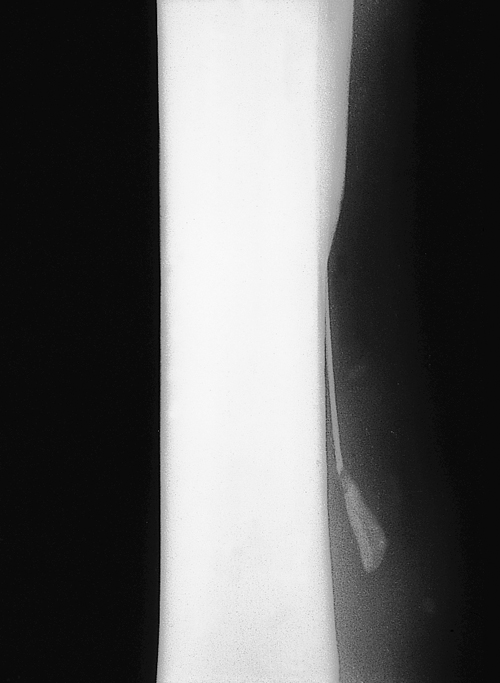Difference between revisions of "Equine Orthopaedics and Rheumatology Q&A 09"
Jump to navigation
Jump to search
| Line 11: | Line 11: | ||
|q1=What is your diagnosis? | |q1=What is your diagnosis? | ||
|a1=A fracture of the distal part of one of the splint bones. | |a1=A fracture of the distal part of one of the splint bones. | ||
| − | |l1= | + | |l1=Equine Phalanges - Anatomy & Physiology#Metacarpals and Metatarsals |
|q2=Assuming that the injury is not associated with external trauma, how is it likely to have occurred? | |q2=Assuming that the injury is not associated with external trauma, how is it likely to have occurred? | ||
|a2= | |a2= | ||
| Line 19: | Line 19: | ||
|q3=What associated structure may have been injured? | |q3=What associated structure may have been injured? | ||
|a3= The adjacent suspensory ligament branch may have been sprained or even ruptured. | |a3= The adjacent suspensory ligament branch may have been sprained or even ruptured. | ||
| − | |l3= | + | |l3=Equine Forelimb - Anatomy & Physiology#Suspensory Apparatus |
|q4= If the horse has both problems, which is most likely to cause persistent lameness? | |q4= If the horse has both problems, which is most likely to cause persistent lameness? | ||
|a4= The splint bone fracture is unlikely to heal by bony union, but the fibrous union formed does not usually cause any problems. <br><br> | |a4= The splint bone fracture is unlikely to heal by bony union, but the fibrous union formed does not usually cause any problems. <br><br> | ||
Revision as of 23:23, 3 August 2011
| This question was provided by Manson Publishing as part of the OVAL Project. See more Equine Orthopaedic and Rheumatological questions |
| Question | Answer | Article | |
| What is your diagnosis? | A fracture of the distal part of one of the splint bones.
|
Link to Article | |
| Assuming that the injury is not associated with external trauma, how is it likely to have occurred? | These fractures are thought to occur as a result of stresses placed on the splint bone by the adjacent suspensory ligament. |
Link to Article | |
| What associated structure may have been injured? | The adjacent suspensory ligament branch may have been sprained or even ruptured.
|
Link to Article | |
| If the horse has both problems, which is most likely to cause persistent lameness? | The splint bone fracture is unlikely to heal by bony union, but the fibrous union formed does not usually cause any problems. However an associated sprain of a branch of the suspensory ligament may well continue to cause lameness. |
Link to Article | |
